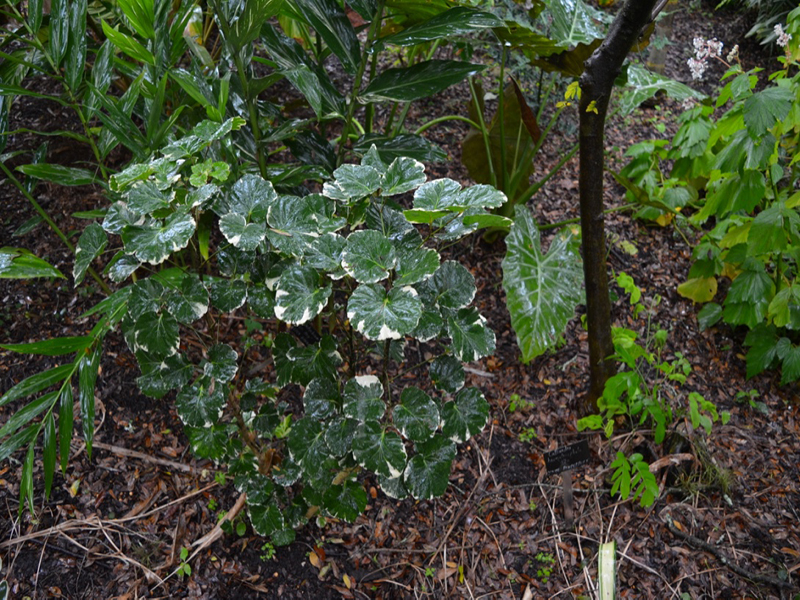
Tropicals > Polyscias > Polyscias scutellaria > Polyscias scutellaria
Polyscias scutellaria
Origin: Native to Africa, Asia, Australia, parts of North and Central America, and South America.
| Family |
| Araliaceae |
| Genus |
| Polyscias |
| Species |
| scutellaria |
| Category |
| Tropicals |
| Type |
| Tree (evergreen), Shrub (evergreen) |
| Synonyms |
| Aralia cochleata, Aralia latifolia, Aralia rotunda, Crassula scutellaria Burm.f., Hedera cochleata (Lam.) Sweet, Hedera latifolia, Nothopanax cochleatus, Nothopanax scutellarius |
| USDA Hardiness Zone |
| 10a - 11 |
| Canadian Hardiness Zone |
| Requires cold season protection under glass. |
| RHS Hardiness Zone |
| H3 - H1c |
| Temperature (°C) |
| (-1.1) to above 4.5 |
| Temperature (°F) |
| 30 - 40 |
| Height |
| 1 - 6 m |
| Spread |
| 0.7 - 0.9 m |
Photographs
Description and Growing Information
Flowering Period
| General Description |
| A much-branched evergreen shrub or small tree growing from 1 - 6 metres tall |
| Landscape |
| An ornamental and hedge plant, valued especially for its showy foliage. |
| Cultivation |
| Grow in full sun to partial shade in a variety of soils as long as they are well-drained. |
| Shape |
| Upright rounded. |
| Growth |
| Medium |
| Pests |
| Mealy bug, scale, mites, nematodes. Xanthomonas blight, Pseudomonas leaf spot, Cercospera leaf spot and Anthracnose. |
| Flower/Leaf Bud Description |
| Woody stems with thin, non-showy smooth bark. |
| Leaf Description |
| Leathery, round, dinner plate-like about 2 - 5 cm diameter; leaves can range in colour from light green to dark green and some varieties have green and cream coloured variegated leaves. |
| Flower Description |
| Yellow-green flowers. |
| Texture Description |
| This plant is considered poisonous and should be kept away from pets and children. |
| Propagation |
| By seed and stem cuttings. |
| Ethnobotanical Uses (Disclaimer) |
| The juice of the leaves has been used to relieve stomach aches and facilitate childbirth. |
References
Tropical Plants Database, Ken Fern. tropical.theferns.info. 2019-06-10.
